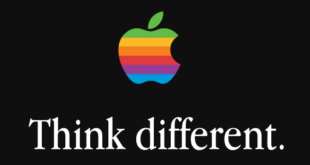Video Resumes – 9 Tips to Make Yours Stand Out

Video resumes are getting more popular, but they’re still not universally accepted by employers. That’s why you need to be careful and strategic about how you present yourself. A good video resume can help set you apart from other job seekers because it shows off your personality and skills in a way that words on a page simply can’t convey. However, a bad video resume can be much worse than no video resume at all: employers may think less of you if your presentation isn’t polished or professional enough. Here are some tips for making sure yours gets noticed:
1. Get a good camera. Use a webcam or good-quality camcorder for your video resume.
You want to make sure that you get a good camera. You can use a webcam or good-quality camcorder for your video resume. It’s also important to test your webcam before you start filming, as it will help you to avoid mistakes at the last minute and make sure your video is ready in time.
If you don’t have access to a professional photographer, use a webcam with high-definition capabilities and lighting; this will ensure that your picture looks clear and bright when people view it on their computer screens. However, if possible, try not to use an ordinary webcam because they often have poor-quality images that don’t show off well in videos.
2. Use a crisp, clean background.
When you’re creating a video resume, the most important thing is to make sure that your face and voice are clearly visible. You want potential employers to see who you really are, not just some blurry figure in the background of a busy office or bustling coffee shop.
There’s only one way to do this: use a plain, solid-color background for your video resume. Don’t use any busy or patterned backgrounds; similarly, don’t use textured or “busy” textures (such as brick walls). A simple color like white or black is perfect because it won’t distract from your face and will create an easy contrast against which other things—like text—can be read more easily on screen.
3. Look into the camera, not at yourself on the screen.
To look natural, don’t be afraid to look directly into the camera. This is important because if you are looking at yourself on the screen, your eye contact will be broken and people will think that you are nervous or awkward. When people watch a video resume, they want to see how you would act in a professional setting. If a recruiter looks at your video resume and sees that you are nervous about being on camera, it’s unlikely that they’ll hire you for the job.
4. Pick just one person to address.
Once you’ve decided on a video resume, there are several ways to begin. You could address the camera, the interviewer, or a hiring manager directly. Each option has its own benefits—and drawbacks.
- If you’d like to speak directly to the interviewer (or hiring manager), then it’s best to start your video by saying something like “Hi!” or “Hello!” and introducing yourself by name. That way they know exactly who they’re hearing from as soon as possible in order for them not to think that perhaps there is another candidate with your same name who applied for another position at the same company.
- If you want your message directed towards potential employers at large but also wish for them to hear about how much value you’d bring their business specifically? Then consider speaking directly into the camera without addressing anyone specifically at all—this makes it easy for viewers’ eyes and ears alike!
5. Don’t forget to edit your video.
Editing can make or break your video resume. The good news is that there are dozens of online video editing tools available to help you out. Don’t just slap on some background music and call it good; take the time to ensure that your video is well-edited, clear and easy to understand.
- Add background music: Although music isn’t necessary every time, when used effectively it can enhance your video or add context to it (e.g., if your video is about how you helped a client improve their business).
- Use a professional-looking backdrop: A plain wall or table isn’t going to cut it here—you want something that will grab attention without being distracting or cheesy (i.e., no memes).
6. Write a script, but don’t read from it.
Once you’ve written the script, practice it a few times to be sure that you’re comfortable with it. Then, when you’re ready to shoot the video, don’t read from your script. Instead, just talk about yourself as if you were talking with a friend over coffee—be yourself and relax! This is common sense and good judgment that will help ensure that your resume video isn’t stiff or boring.
7. Sell yourself in two minutes – less is more.
You’re a busy person, and so is the recruiter. If you want your resume to stand out, you need to make sure it’s short and sweet. The ideal length for a video resume is one minute long – this includes any titles or introductions that you may use at the beginning of your video.
The reason why less is more when it comes to video resumes is that people are very busy these days so they won’t have time to watch an entire two-minute video from start to finish if it isn’t engaging them from the get-go!
8. Practice first, maybe with a friend or spouse, to get used to talking in front of the camera.
Before you start filming, it’s a good idea to practice in front of the camera so that you feel comfortable with what you are saying. You can do this by yourself or with someone else.
- Practice in front of a mirror — Watch your posture, how you move your hands and face and make sure that everything is being captured on screen. This will also help you get used to talking while having your back turned towards the camera as this is how videos usually begin.
- Practice in front of friends or family — This is another way to test out how well people understand what they’re seeing when they watch the video without any background noise or distractions (like dogs barking). It will also give them an idea of whether they want to see their favorite niece/nephew/son/daughter/cousin regularly on YouTube!
- Practice with a script — Before writing out content for each section of your video resume, take some time thinking about what kind of information might best represent who you are as an applicant through words rather than images or sound (e.g., “I’m detail-oriented”). Then try reading it aloud until it feels natural enough for public consumption!
9. Check and double-check your work before hitting “send.”
When you’re done, check and double-check your work before hitting “send.” Make sure the video quality is good, the audio quality is good, the video length is appropriate and there are no spelling or grammatical errors on your resume. It’s also worth noting that a resume that doesn’t reflect the present state of an applicant’s career could be a red flag for an employer who only has 30 seconds to decide whether or not to bring someone in for an interview.
A video resume can help you stand out to employers
A video resume can help you stand out to employers, especially in a world where we’re all bombarded with hundreds of applications. It’s clear that more and more companies are embracing video resumes because they allow recruiters to get to know each candidate better than they could with just a written piece.
Video resumes are also incredibly useful for people who have unique skills or experience, but have trouble describing them in writing. For example, if you’ve worked overseas and have little work history on your resume (perhaps due to visa restrictions), this method of application can give you an opportunity to show off the real-world results of your hard work—without having those achievements overshadowed by lengthy periods when no one was paying attention!
Finally, if there’s anything about yourself that sets you apart from other applicants (like being fluent in several languages), using video instead of text gives you the chance to show off how good your accent is without being judged by language experts offhandedly glancing through their inboxes looking for someone who speaks their native tongue perfectly.
Conclusion
Video resumes are a great way to be noticed by employers. If you have the talent and experience, it’s worth the time and effort to create one. Make sure that your video is short and sweet – less than two minutes long. Then, spend some time practicing how you will speak on camera before recording anything so that when an employer sees it, they’ll know right away how awesome you are!
#VideoResumes #Tips #videoeditor #videoedit #videodesign #videos #veed
 Epic Heroes Entertainment Movies Toys TV Video Games News Art Pop culture news goodness
Epic Heroes Entertainment Movies Toys TV Video Games News Art Pop culture news goodness




